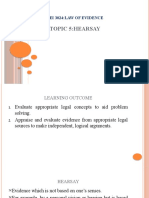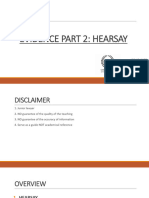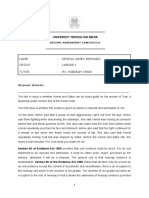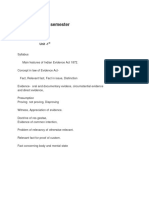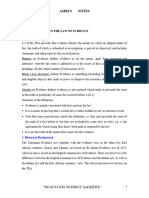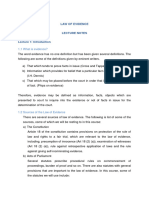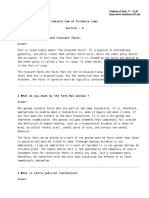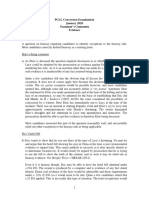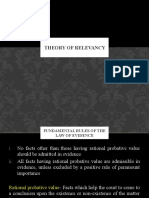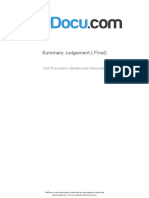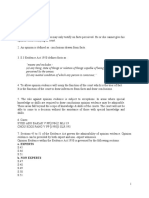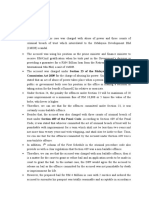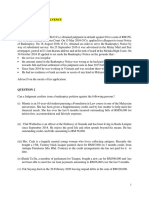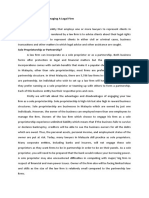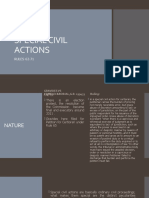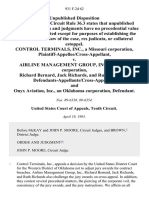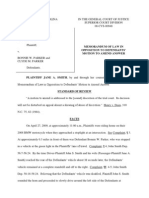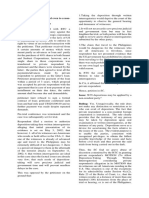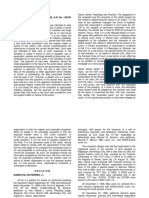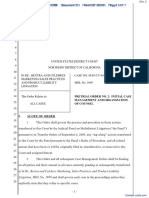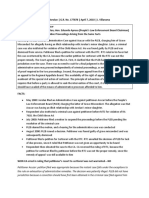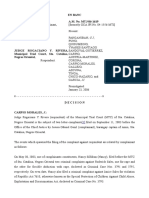Skeletal Answer
1st Issue: Whether the trial judge had erred in admitting Bisu's police report (Exhibit
P7) as evidence?
Section 73A of the EA 1950: Documentary evidence to be tendered through the maker
Lim Guan Eng V Public Prosecutor [2000] 2 MLJ 577: S.73A of EA 1950 should be
read as a whole. The subsections should not be read in isolation of one another. The
exceptions cannot be relied on. The whole section refers to the question of admissibility
of a statement made by a person in civil proceedings.
o Bisu's police report cannot be said to fulfil S.73A(4). He made a police report but
died of tuberculosis and it can be seen in the case that Bisu's police report was an
initial report.
Jaafar Bin Shaari & Anor (Suing As Administrators Of The Estate Of Shofiah Bte
Ahmad, Deceased) v Tan Lip Eng & Anor [1997] 3 MLJ 693: It is elementary that to
call the maker or writer of a document is the best evidence of the document's authenticity
or existence.
o Bisu as the maker must be called to prove the report.
Allied (M) Bhd v Yau Jiok Hua [1998] 6 MLJ 1: It is settle law where a document is
sought to be proved in order to establish the truth of the facts contained it, the maker has
to be called. Non-compliance with this rule will result in the contents of the documents
being hearsay.
o Evidence would be admissible if it is relevant and not excluded by any rule of
evidence. However, Bisu’s police report should be disregarded as he, the maker,
being dead, the report was not proved in evidence and he cannot appear in court
for cross-examination.
Wong Thin Yit v Mohamed Ali [1971] 2 MLJ 175: The defendant did not attend court
for cross-examination. The police report was clearly hearsay evidence. Its inclusion in the
agreed bundle was obviously on the assumption that the defendant would appear at the
trial to testify.
o Bisu’s police report was tendered on behalf of the Respondent by PW3 the police
officer was the one who took down the initial report by Bisu, and marked as
Exhibit P7.
2nd Issue: Whether the Appellant’s police report marked as D3 is admissible?
Section 5 of the EA 1950: Evidence may be given of facts in issue and relevant facts.
Section 8(2) of the EA 1950: The conduct of any party that is antecedent or subsequent is
relevant if such conduct influences or is influenced by any fact in issue or relevant fact.
Parlan bin Dadeh v PP [2008] 6 MLJ 19: If the conduct influenced by any fact in issue
or relevant fact satisfies the requirement of Section 8 of EA 1950, it is admissible. It must
be observed that the degree of proof required to establish evidence of conduct would
depend on the nature of the conduct.
o The police report lodged by the Appellant is relevant on the grounds that the
Respondent’s conduct of not stopping at the junction before turning left has
directly influenced the fact in issue that he was knocked by the Appellant. Besides
that, his failure to wear a safety helmet has also directly influenced the fact that he
had suffered severe injuries.
Sarkar on Evidence (15th edn): Conduct includes antecedent or subsequent conduct
involving both actions and statements.
o The Respondent’s conduct is an antecedent conduct involving actions that he
failed to stop before turning left and failed to wear a safety helmet.
� The Admissibility And Use Of Police Reports In Accident Cases [2003] 1 MLJ lxv:
The police reports lodged by the parties are relevant because it contains the gist of each
version and may be used to contradict and discredit the oral evidence of the party in court.
All such police reports are admissible at the trial of the action, regardless of whether they
are first information reports or not. The reports must generally be tendered through the
makers, except when the parties agree otherwise or when they fall within the exceptions
under Section 32 or 73A of the Evidence Act 1950.
Practice Note No 1 of 1969 issued by the Judicial Department: The minimal
requirements of the Agreed Bundle of Documents shall include the police reports made
by the driver or drivers of the vehicles involved.
3rd Issue : Whether the trial judge had erred in admitting Newbie’s testimony marked
as Exhibit P5 as evidence?
Section 9 : Provides for the relevancy of facts which establish the identity of anything or
person whose identity is relevant.
PP v Ayyayoo a/l Subramaniam [2004] 6 MLJ 511 : The court held that the facts of
identification of a person is relevant and admissible in evidence under Section 9.
Identification by voice : Teng Kum Seng [1960] 1 LNS 139
Visual Identification : PP v Chan Choon Keong [1989] 2 MLJ 427
Turnbull Guideline : R v Turnbull [1977] QB 224
Application of Turnbull Guideline in Malaysia : Heng Aik Ren Thomas v Public
Prosecution [1998] 3 SLR(R)142 (Establish 3 steps)
Newbie’s testimony which obtained from 30 metres behind XYZ’s motorcycle which is
on the blind corner of the junction that marked as Exhibit P5 is of poor quality and unsafe
to rely.
It is also irrelevant for Newbie to hear the voice of the respondent as the engine of
Newbie’s motorcycle together with the sound of the engine of other vehicle on the road.
Pendakwa Raya v Joachim Selvanathan and Others [2009] MLJU 748
The evidence produce by respondent which is the Bisu’s police report marked as exhibit
P7 which was now inadmissible under the law and the only evidence can prove is the man
standing over him, but the man had ran away after seeing a group of other motorists
converging to the site of accident.
In essence, we submit that the testimony made by Newbie which obtained from 30 metres
behind XYZ’s motorcycle that marked as Exhibit P5 is of poor quality and unsafe to rely
upon by the court, thus Newbie’s testimony is inadmissible under the law.
4th Issue : Whether the appellant has proven the case on the balance of probabilities?
Wong Thin Yit and Mohamed Ali [1971] 2 MLJ 175 : Burden of proof is on the
plaintiff in a negligence case
Section 103
The burden of proof is now lies on the appellant to prove that the respondent contributed
himself to the accident as the respondent had not stopped his motorcycle before turning
left into Jalan Sungai Putat and failure to wear a safety helmet or even if he was wearing
one, it was not strapped on properly or of a quality below that recommended by SIRIM.
Boy Andrew (Owner) v St Rognwald (Owner) 1947 SC (HL) 70
O’Connell v Jackson [1971] 3 WLR 463: must wear helmet
In essence, the appellant had pleaded the facts that the respondent had contributed his
own negligence in the accident as he fail to stopped his motorcycle before turning left
into Jalan Sungai Putat and failure to wear a certified safety helmet.
